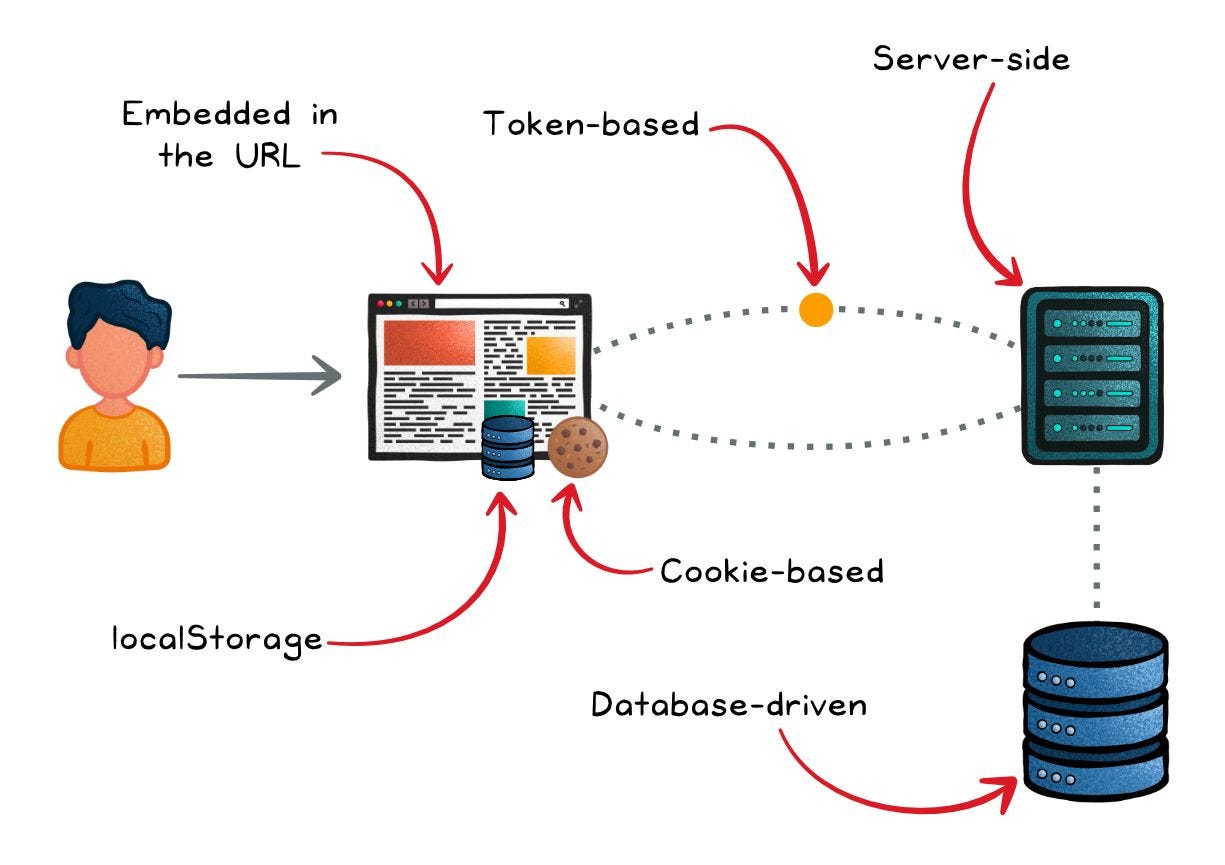Session Management Demystified: Cookies, Tokens, and Security
(5 Minutes) | Unpacking Session Management
Get our Architecture Patterns Playbook for FREE on newsletter signup:
Your terminal, but smarter
Presented by Amazon Web Services (AWS)
Q Developer CLI provides a lightning-fast agentic coding experience. Generate code on the fly? ✅ Read and write files locally? ✅ MCP support? ✅ Effortlessly call APIs? ✅ Claude 3.7? ✅ Run bash commands? ✅
Session Management Demystified: Cookies, Tokens, and Security
Imagine having to reintroduce yourself every time you speak to someone.
Exhausting, right?
Our applications experience the same dilemma. They need a way to recognize the users interacting with them.
This is where session management comes in.
Session management is the practice of maintaining a persistent, authenticated state for users interacting with web applications. It ensures that the server can identify and authenticate users across multiple requests, ensuring that interactions can flow without constant reintroductions.
Why is it Important?
There are two primary reasons that session management is a fundamental component of web applications; maintaining user state, and security.
HTTP is a stateless protocol, meaning each request from a client to a server is treated as a new, standalone request with no memory of previous interactions.
Session management provides a way to retain user-specific data across multiple requests.
As for security, proper session management ensures that the user is who they say they are throughout the session's lifespan, providing protection against unauthorized access, CSRF attacks, session hijacking, and more.
The Mechanics Behind the Scenes
Not all session management strategies are created equal. Here are three widely used approaches, each with its own strengths and trade-offs:
Cookies
Cookies are small pieces of data sent from a server and stored on a user's web browser while the user is browsing. They are the most common session management tool, and can be used for both server-side session IDs and stateless tokens like JWTs.
Upon a successful login, the server sends a unique session ID in a cookie. With each subsequent request, the browser sends this cookie, reminding the server that they've met before.
Token-Based Management (Stateless)
Modern, distributed applications often rely on token-based systems, which eliminate the need for server-side session storage.
How it works: After login, the server issues a JSON Web Token (JWT) or similar token, which the client stores in local storage, session storage, or a secure, HTTP-only, Secure cookie.
Why use it: Tokens are stateless, meaning the server doesn’t need to maintain a session store. This approach scales well for microservices, APIs, and multi-region architectures, but comes with its own security considerations, like token expiration and revocation.
Advanced considerations: Implement token rotation to reduce replay attack risks and consider token binding to cryptographically tie tokens to specific clients.
Real-world use: Widely adopted in Single Page Applications (SPAs), microservices, and serverless architectures where scalability and distributed data flow are critical.
Server-Side Session Management (Stateful)
This traditional approach keeps the session state on the server, typically in a database, in-memory store (eg; Redis), or file system.
How it works: The client holds only a session identifier, while the server manages the full session state. This can offer tighter control over session data but introduces scalability challenges, as session data must be synchronized across multiple servers.
Scalability: To handle scale, use sticky sessions, distributed caches, or centralized session stores like Redis or Memcached.
Real-world use: Often found in legacy applications or scenarios where strong consistency is a priority, like financial systems or enterprise portals.
Core Security Best Practices
1) Session expiry and invalidation:
— Set reasonable expiration times to limit the risk of session hijacking.
— Invalidate sessions on logout, password change, or account deletion.
— Use absolute and sliding expiration policies depending on your risk tolerance.
2) Session ID regeneration (session fixation protection):
— Regenerate session IDs upon login or privilege escalation to prevent session fixation attacks.
— Use randomized, cryptographically secure session IDs.
3) Secure cookie attributes (if using cookies):
— Secure: Prevents transmission over non-HTTPS connections.
— HttpOnly: Prevents client-side JavaScript from accessing the cookie.
— SameSite: Restricts cross-site request contexts to mitigate CSRF.
4) Token rotation and revocation (if using tokens):
— Use short-lived tokens with automatic rotation to reduce the impact of token theft.
— Implement token revocation mechanisms for high-risk actions.
— Use the OAuth 2.0 standard where possible for fine-grained access control.
5) Least privilege and scoping:
— Limit the scope of session tokens to the minimum necessary for the intended actions. — Use fine-grained access controls and avoid over-scoping JWTs.
6) Zero trust and device binding:
— Consider token binding to cryptographically tie tokens to specific devices.
— Use mutual TLS (mTLS) for higher security in sensitive applications.
Final Thoughts
Session management, though often operating in the background, stands as a cornerstone in ensuring the fluidity and security of our applications and systems. Proper session management not only plays a role in creating smooth user experiences. In an era marked by cyber threats, it’s a major pillar of keeping our applications and systems secure.
Subscribe to get simple-to-understand, visual, and engaging system design articles straight to your inbox:




